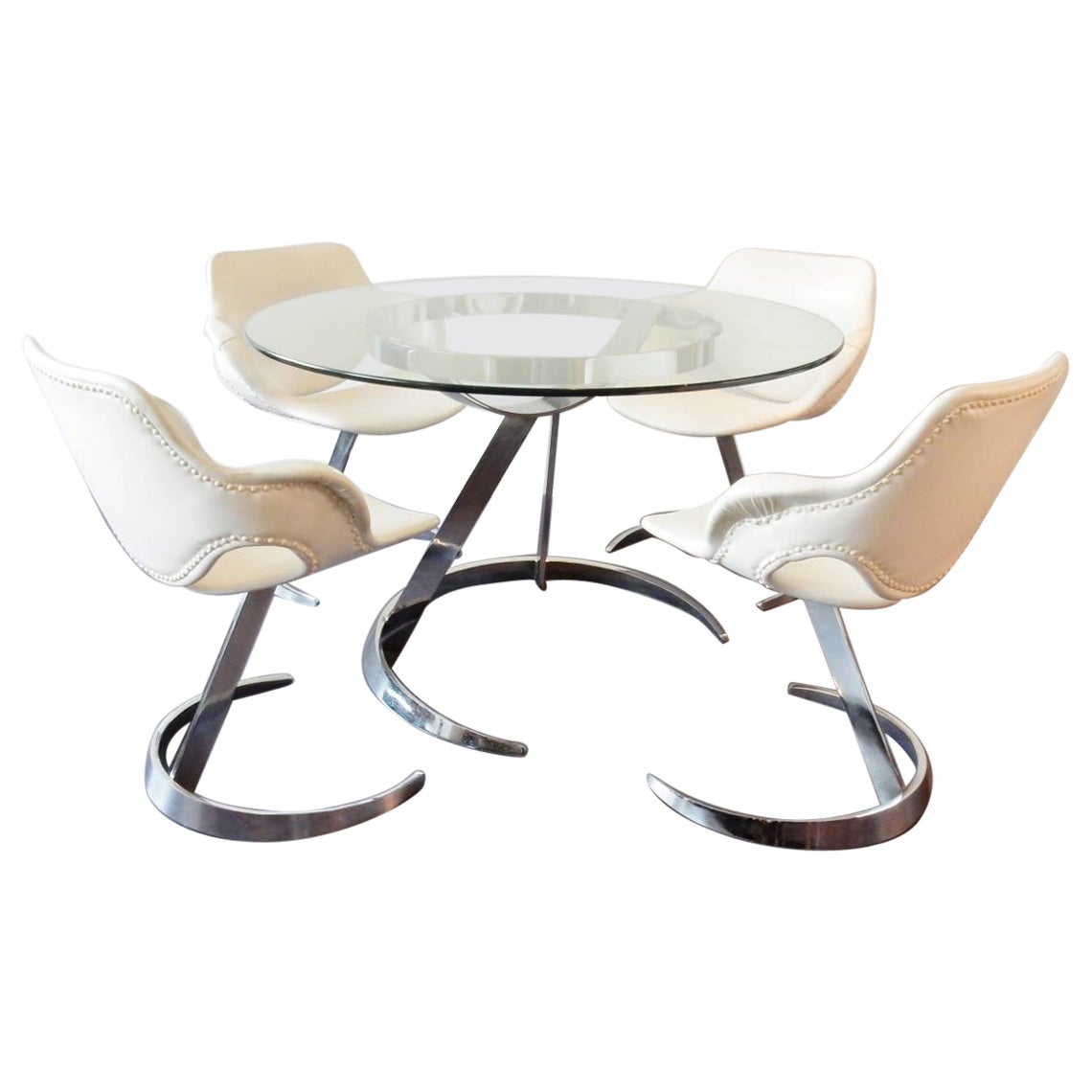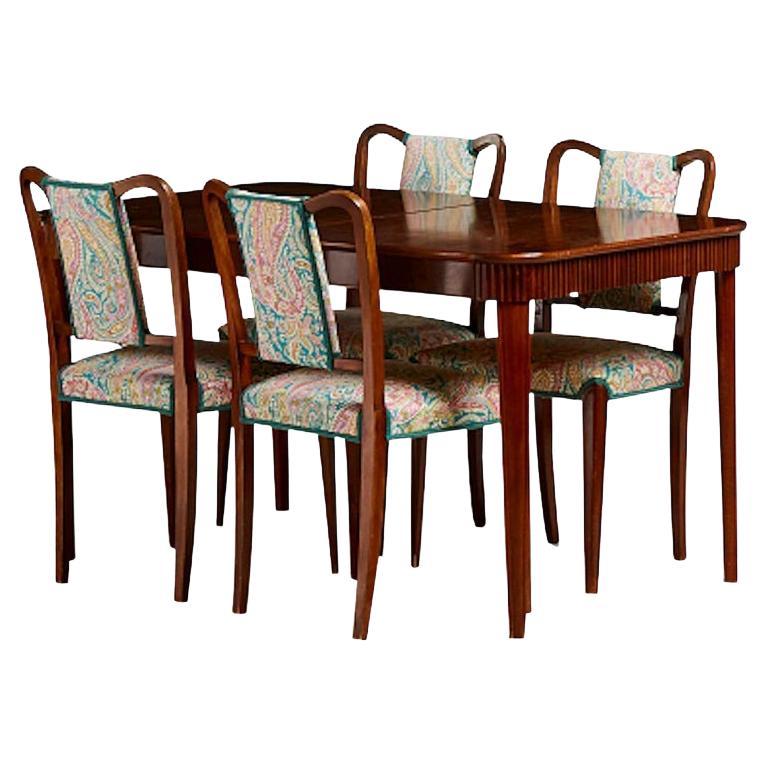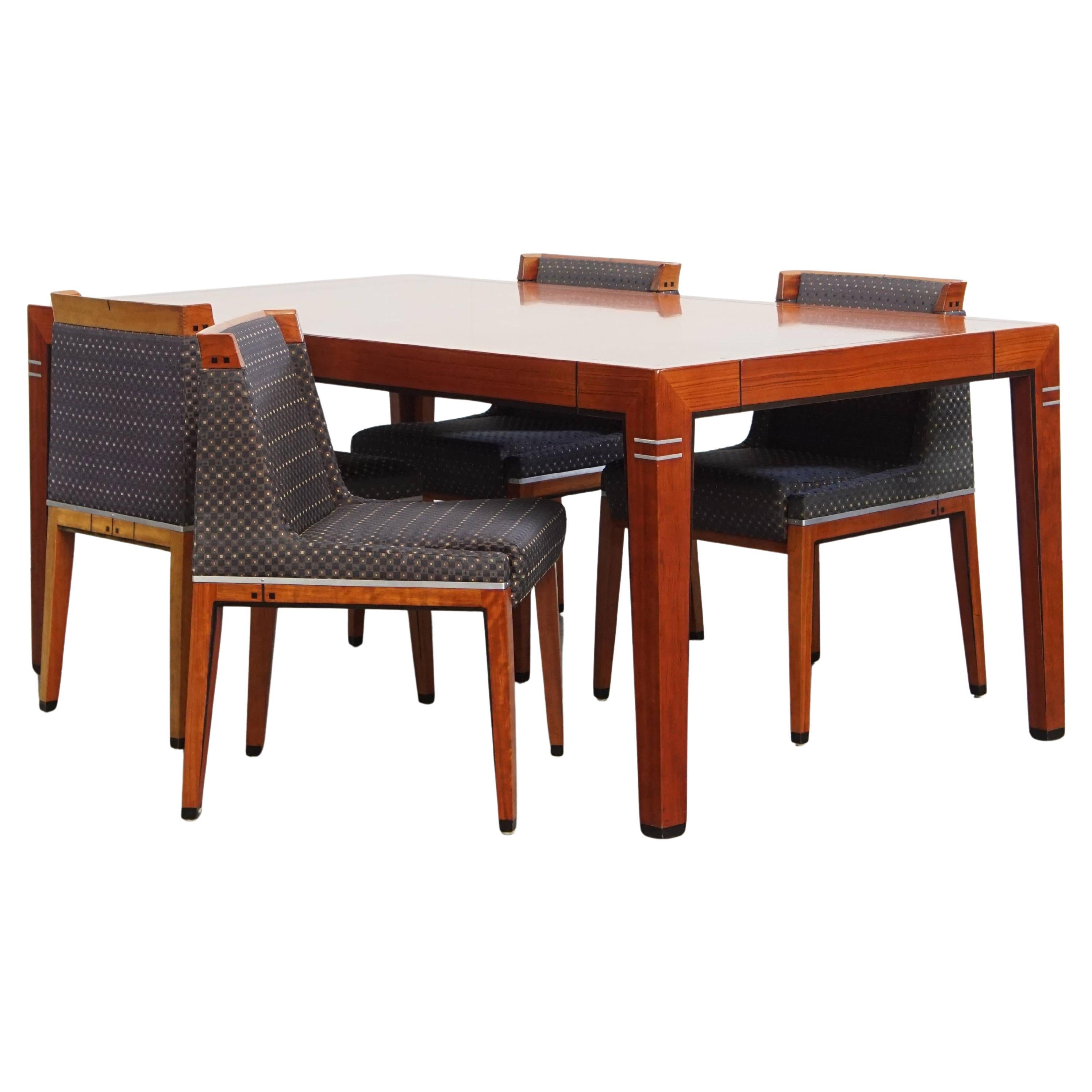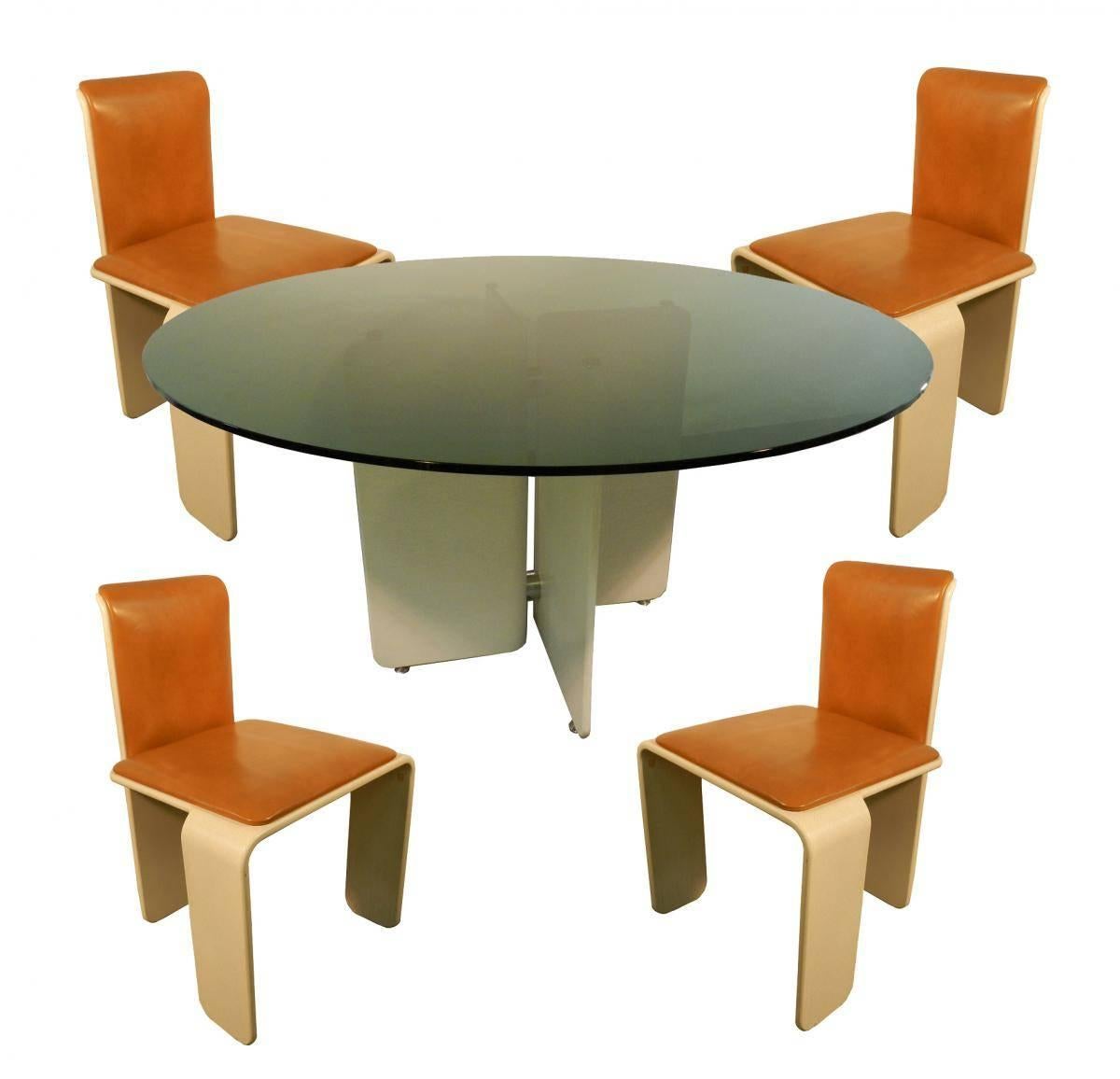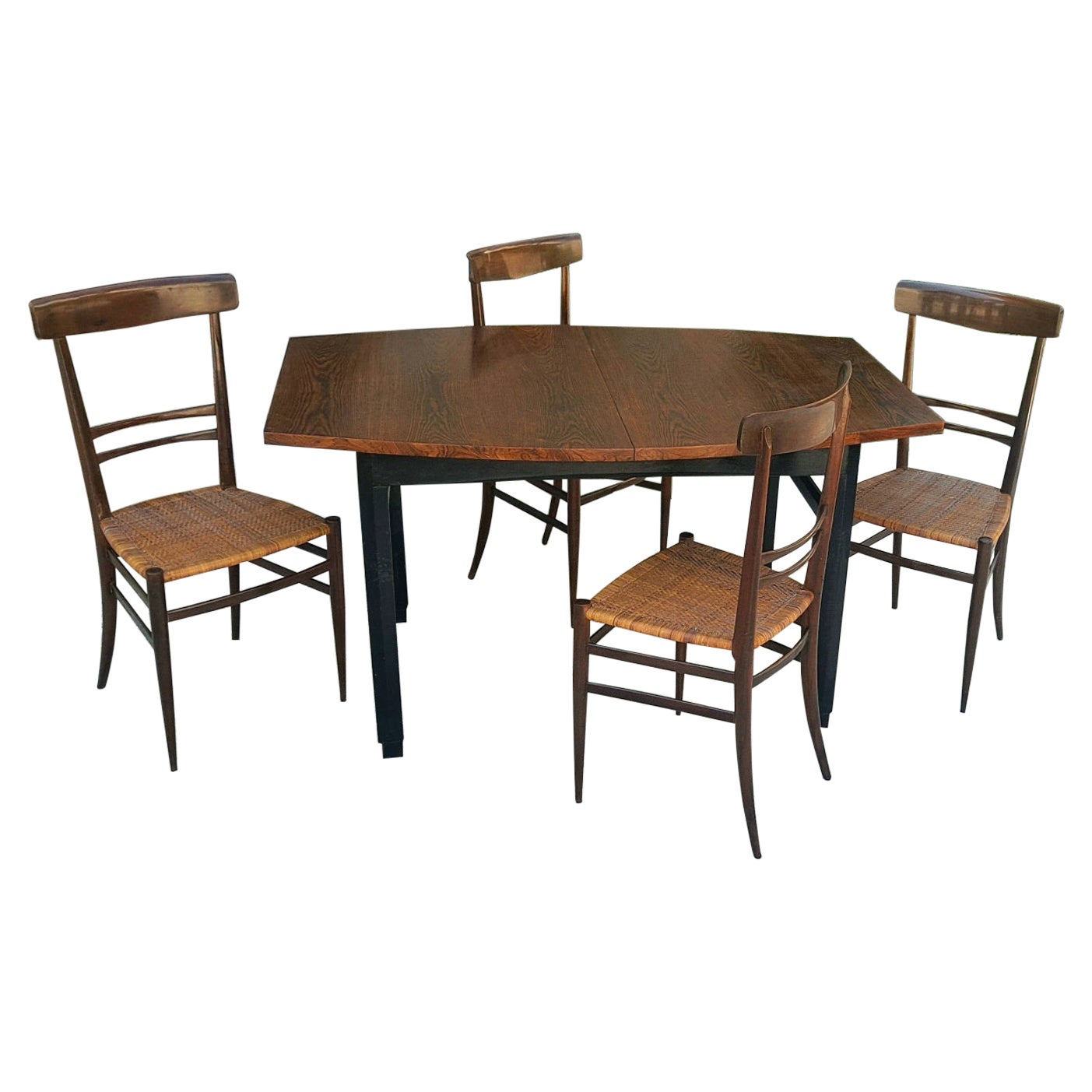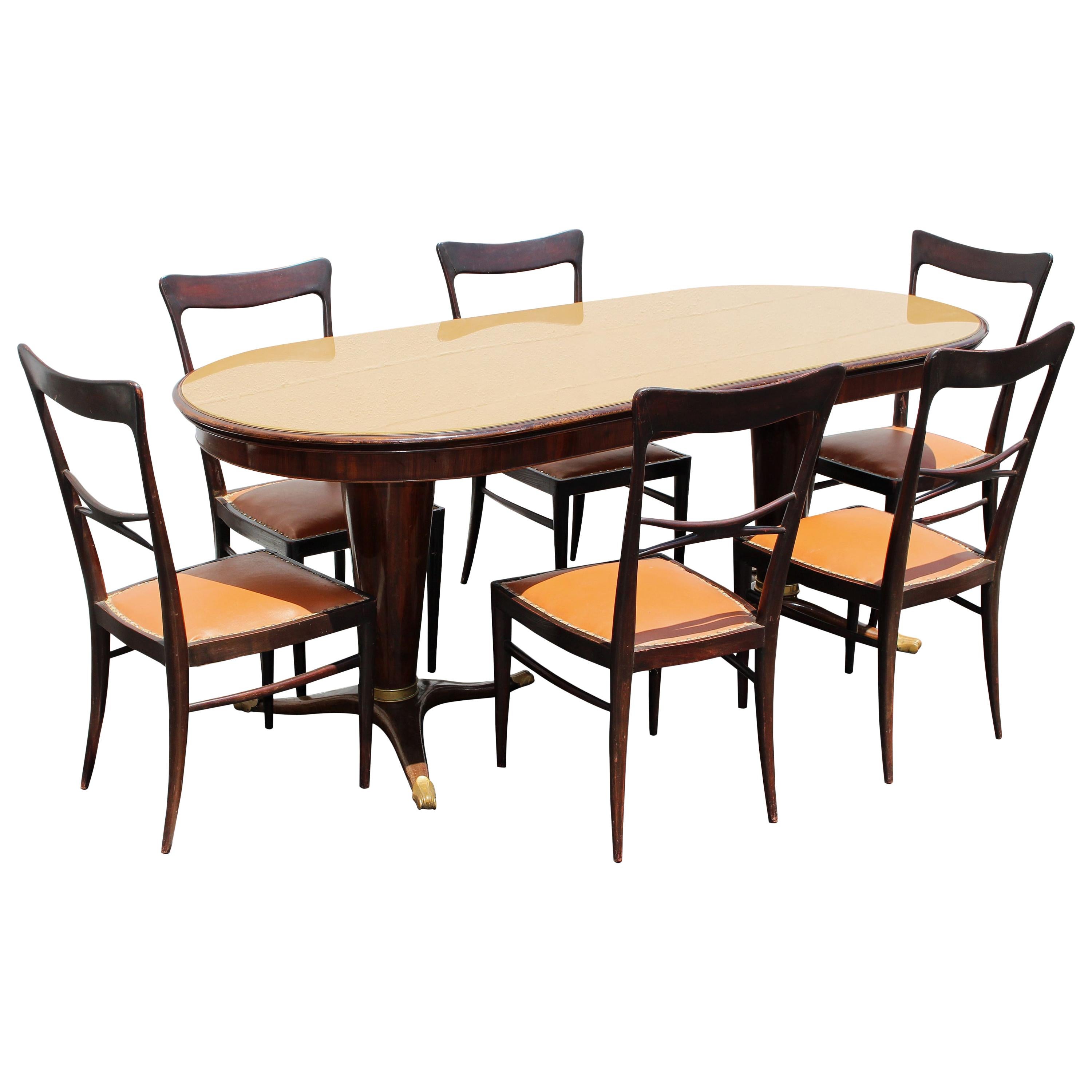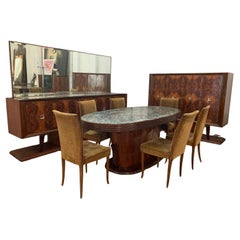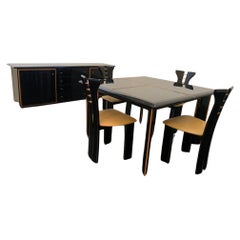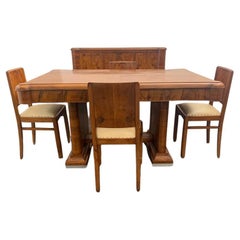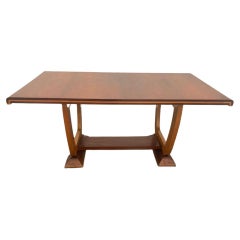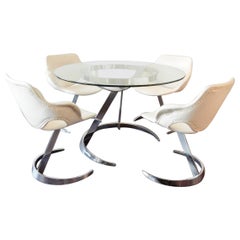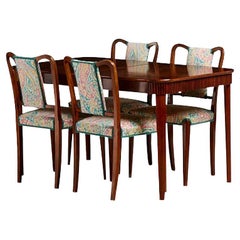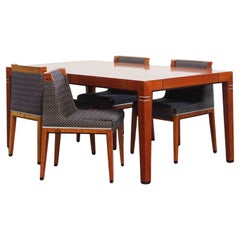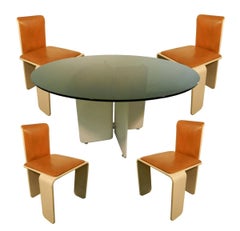Items Similar to Dining Set for 3 People, 1970, Set of 4
Want more images or videos?
Request additional images or videos from the seller
1 of 13
Dining Set for 3 People, 1970, Set of 4
$2,408.37per set
£1,781.89per set
€2,000per set
CA$3,330per set
A$3,655.93per set
CHF 1,907.31per set
MX$44,241.83per set
NOK 23,905.12per set
SEK 22,524.91per set
DKK 15,228.06per set
About the Item
A solution for upper middle-class furnishing, with effect and impact. Visible quality and elegance of design. The set for three persons consists of: a table H 48 cm x diameter 119 cm and three chairs H 87 cm x 45 cm x depth 55 cm, seat H 44 cm.
- Dimensions:Height: 30.71 in (78 cm)Diameter: 46.86 in (119 cm)
- Sold As:Set of 4
- Materials and Techniques:
- Place of Origin:
- Period:
- Date of Manufacture:1970-1979
- Condition:The vintage item has no defects but may show slight traces of wear due to age and use. Fabric to be cleaned or replaced.
- Seller Location:Montelabbate, IT
- Reference Number:Seller: D9811stDibs: LU6481233864142
About the Seller
5.0
Vetted Professional Seller
Every seller passes strict standards for authenticity and reliability
1stDibs seller since 2022
69 sales on 1stDibs
Typical response time: 1 to 2 days
- ShippingRetrieving quote...Shipping from: Montelabbate, Italy
- Return Policy
Authenticity Guarantee
In the unlikely event there’s an issue with an item’s authenticity, contact us within 1 year for a full refund. DetailsMoney-Back Guarantee
If your item is not as described, is damaged in transit, or does not arrive, contact us within 7 days for a full refund. Details24-Hour Cancellation
You have a 24-hour grace period in which to reconsider your purchase, with no questions asked.Vetted Professional Sellers
Our world-class sellers must adhere to strict standards for service and quality, maintaining the integrity of our listings.Price-Match Guarantee
If you find that a seller listed the same item for a lower price elsewhere, we’ll match it.Trusted Global Delivery
Our best-in-class carrier network provides specialized shipping options worldwide, including custom delivery.More From This Seller
View AllVintage Dining Set, 1940, Set of 9
Located in Montelabbate, PU
Elegant Art Deco Dining Room Set – Fine Craftsmanship and Premium Materials.
This exquisite Art Deco dining room set showcases outstanding woodworking and high-quality materials. The...
Category
Vintage 1940s Italian Art Deco Dining Room Sets
Materials
Marble
$30,104 / set
Dining Table Set by Pierre Cardin for Roche Bobois, 1970s, Set of 6
By Roche Bobois
Located in Montelabbate, PU
Dining room set by Pierre Cardin for Roche Bobois, 1970s. Black lacquered wood set consisting of four chairs, a table and a sideboard. The table has an extendable glass top (extensio...
Category
Vintage 1970s Italian Modern Dining Room Sets
Materials
Glass, Wood, Lacquer
$6,020 Sale Price / set
33% Off
Table and Chairs in Walnut and Walnut Feather Leather Seat, 1930s, Set of 5
Located in Montelabbate, PU
Table and four chairs in walnut and walnut feather with leather seats. Table H 83x100x163 cm. Chairs H 88x45x43 cm, seat H 48 cm. Slight wear due to age and use.
Packaging with bubbl...
Category
Vintage 1930s Art Deco Tables
Materials
Leather, Walnut
$2,287 Sale Price / set
45% Off
Elm & Maple Dining Table, 1940s
Located in Montelabbate, PU
Elm & Maple dining table, 1940s
Packaging with bubble wrap and cardboard boxes is included. If the wooden packaging is needed (crates or boxes) for US and International Shipping, it...
Category
Vintage 1940s Italian Art Deco Dining Room Tables
Materials
Elm, Maple
$722 Sale Price
60% Off
Brutalist Dining Table in Oak
Located in Montelabbate, PU
Brutalist oak table with spectacular workmanship that preserves the grain in relief, 1940s-50s. Central bowl-shaped base resting on a flattened and...
Category
Vintage 1950s Belgian Mid-Century Modern Dining Room Tables
Materials
Oak
Table with Filiform Legs Attributed to Ico & Luisa Parisi, 1950s
By Ico & Luisa Parisi
Located in Montelabbate, PU
Round table attributed to Ico and Luisa Parisi, 1950s. Rosewood top and rosewood-stained beech legs.
Piece attributed to the above designer/maker. It has no hallmark or proof of aut...
Category
Vintage 1950s Italian Mid-Century Modern Dining Room Tables
Materials
Beech, Rosewood
You May Also Like
Dining set atributed to Boris Tabacoff, early 1970's
By Boris Tabacoff
Located in Steenwijk, NL
This dining set is a fully original set that attributed to Boris Tabacoff for 'Mobilier Modulaire Moderne' (MMM) from France.
Boris Tabacoff, a French designer of Bulgarian origin. ...
Category
Vintage 1970s French Mid-Century Modern Dining Room Sets
Materials
Chrome
$13,246 / set
Lovely Dining Set, Four Chairs and a Dining Room Table
Located in New York, NY
This set includes a dining room table that includes an attachment. The table is approximately 53 inches long, but the extension adds 16 inches, making it nearly 70 inches in length. ...
Category
Mid-20th Century European Mid-Century Modern Dining Room Sets
Materials
Wood
Set of a dining table and 4 dining chairs
Located in Harderwijk, NL
Offered: this beautiful Art Deco set consisting of a dining table and 4 dining chairs by Schuitema from the Decoforma series.
This elegant Art Deco design dining table and chairs are...
Category
21st Century and Contemporary Art Deco Dining Room Sets
Materials
Upholstery, Wood
$7,640 / set
Set of Thermoformed Wood Dining Room, circa 1960
Located in Saint-Ouen, FR
Set of dining room in lacquered thermoformed wood and chromed metal.
One table and four chairs.
Top of the table in tinted glass (blue-green).
Category
Vintage 1960s French Modern Dining Room Sets
Materials
Chrome
$9,031 / set
Dining Room Set in Style of Gio Ponti
By Gio Ponti
Located in Los Angeles, CA
Lent of the table close is 53 and open is 70.5 with Butterfly mechanism extension the chairs are regular dimension. Butterfly mechanism extension is functi...
Category
Vintage 1960s Italian Mid-Century Modern Dining Room Sets
Materials
Cane, Wood
$5,950 Sale Price / set
32% Off
Dining Room Set in the Style of Paolo Buffa, possibly made by Dassi, circa 1954
By Dassi, Paolo Buffa
Located in Los Angeles, CA
Italian 1950s Paolo Buffa style dining room set. Walnut base mirrored glass top and the brass feet, table can be dismantle for the easy transport.
Category
Vintage 1950s European Art Deco Dining Room Sets
Materials
Fruitwood
$4,875 Sale Price / set
25% Off
More Ways To Browse
Expanded Metal Table
Georgian Breakfast Table
Georgian Oval Dining Table
Herman Miller Segmented Table
Herringbone Dining Table
Hexagon Rattan Table
Jacobean Antique Dining Tables
Johannes Andersen Rosewood Dining Table
Jupe Table
Knoll Cyclone Table
Large Oak Refectory Table
Lira Table
Long Wooden Table
Mahogany Dining Table 1930s
Milo Baughman Olive Burl
Oak Parquet Dining Table
Pippy Oak
Poul Kjaerholm Pk54
